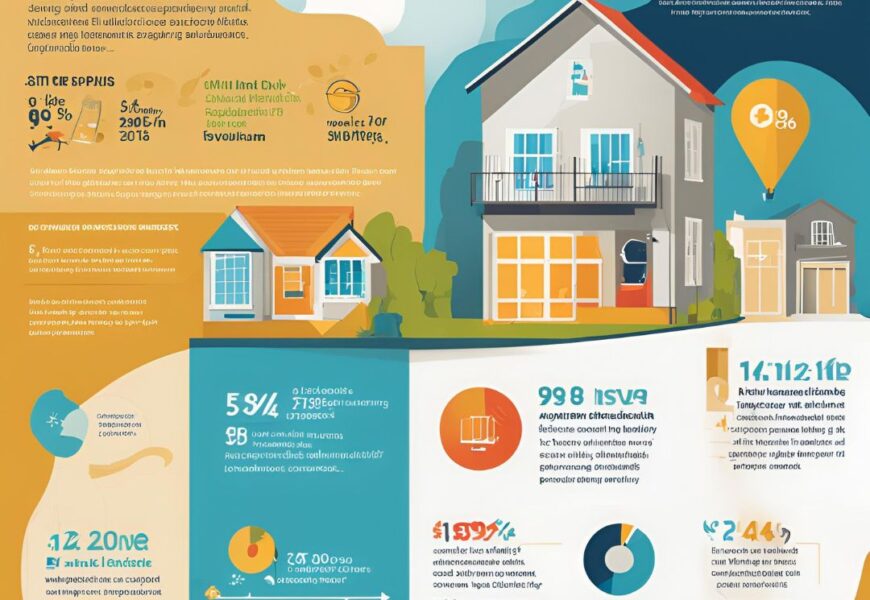When diving into the world of real estate, you may come across a term that leaves you scratching your head—stip int. What is it, and how does it impact real estate transactions? Let’s break it down.
Understanding Stip Int in Real Estate
“Stip Int” stands for “Stipulated Interest.” In the context of real estate, it refers to the specific interest rate agreed upon in certain types of transactions, particularly in deals involving financing or loans. The term stip int is often used in the context of seller financing, lease options, or land contracts, where the interest rate is clearly outlined and agreed upon by both parties involved.
For example, in a seller-financed deal, the seller may agree to finance the purchase of a property instead of the buyer obtaining a traditional mortgage. In this case, the stip int represents the interest rate that the seller will charge the buyer on the outstanding balance over the agreed-upon repayment term.
Importance of Stipulated Interest in Real Estate Deals
- Clear Terms for Financing
Having a stip int clause in a deal ensures that both parties are on the same page about how interest will accrue on the outstanding balance. It provides transparency and clarity, so there’s no ambiguity regarding payments and the overall cost of the transaction. - Flexibility in Financing Options
In certain situations, especially when buyers or sellers are unable to secure traditional financing, seller financing with a stipulated interest rate can provide more flexible terms. This can make it easier for the buyer to purchase the property, and for the seller to sell it, even if traditional banks are not involved. - Predictability of Payments
By having an agreed-upon interest rate, the buyer knows exactly what their payments will be over the life of the loan or agreement. This removes the guesswork and ensures that both parties can plan accordingly. - Negotiation Leverage
The stip int rate also opens up room for negotiation between the buyer and seller. Depending on the market, the buyer may ask for a lower interest rate, while the seller may want to set it higher based on the terms of the deal. It’s an important tool for both parties to align their expectations.
When is Stip Int Used?
While stip int can apply to various real estate agreements, it is most commonly seen in the following scenarios:
- Seller Financing: When a seller agrees to finance the buyer’s purchase, they will outline the terms, including the interest rate. The stip int in this case defines the specific interest charged over the duration of the loan.
- Lease Option Agreements: In some lease-to-own agreements, the landlord or property owner may include a stipulated interest rate if the lease is structured like a contract, where a portion of the lease payments will go toward the future purchase of the property.
- Land Contracts: This is another example where a stip int would apply. A land contract is an agreement where the buyer makes payments directly to the seller over time, and the stipulated interest rate is often part of the terms.
Stip Int vs. Traditional Mortgage Interest
One of the key differences between stip int and a traditional mortgage interest rate is the level of flexibility and negotiation involved. Traditional mortgages often have fixed interest rates, meaning the rate stays the same over the life of the loan, subject to market fluctuations. However, in real estate deals with stip int, the rate might be more negotiable, and it could vary based on factors such as the buyer’s creditworthiness, the terms of the deal, and market conditions.
Moreover, unlike traditional mortgage lenders (banks or financial institutions), who base interest rates on standardized criteria, the seller in a seller-financed deal can set the stip int to suit their needs and the buyer’s ability to pay.
Conclusion
In summary, stip int in real estate refers to the stipulated interest rate agreed upon in various types of financing agreements, especially when seller financing, lease options, or land contracts are involved. It ensures clarity and predictability for both parties and plays a crucial role in setting the terms for how interest will be charged on the outstanding balance.
Understanding how stip int works can be crucial for both buyers and sellers, especially in non-traditional real estate transactions. By clearly defining the interest rate, it helps ensure that everyone is on the same page and that payments are straightforward.
How is the stipulated interest rate determined?
The stipulated interest rate is typically negotiated between the buyer and the seller. Factors like the current market interest rates, the buyer’s creditworthiness, and the terms of the deal will influence the agreed-upon rate. It can be higher or lower than traditional mortgage rates depending on the situation.
When would I encounter a stip int in real estate?
You’ll most likely encounter stip int in alternative financing arrangements, such as seller financing, lease-to-own options, or land contracts. These agreements often involve direct payments between the buyer and seller, with the interest rate (stip int) clearly outlined in the contract.
How is stip int different from traditional mortgage interest?
While traditional mortgages typically come with standardized interest rates set by banks or financial institutions, the stipulated interest rate (stip int) is more flexible. It can be negotiated between the buyer and seller and may be based on the unique terms of the deal, making it more adaptable to non-traditional financing situations.
Is the stipulated interest rate negotiable?
Yes, the stipulated interest rate is usually negotiable. The buyer and seller can agree on a rate that works for both parties, considering factors like the buyer’s financial situation, the property’s value, and the length of the repayment period.
Does the stipulated interest rate change over time?
Typically, the stipulated interest rate is fixed for the duration of the agreement, though some contracts might include adjustable rates that change over time, depending on the terms negotiated. It’s important to carefully review the contract to understand whether the interest rate is fixed or variable.
Can the stip int impact the total cost of a property?
Yes, the stipulated interest rate directly impacts the total amount paid over the life of the loan. A higher stip int means higher monthly payments and a greater total cost of the property. On the other hand, a lower stipulated interest rate may reduce the overall cost of the transaction.
What happens if I don’t pay the stipulated interest amount?
If you fail to make payments based on the agreed-upon stipulated interest rate, the seller may have the right to initiate legal action, including foreclosure, depending on the terms of the agreement. It's important to adhere to the payment schedule outlined in the contract to avoid legal issues.
Can a seller change the stipulated interest rate after the deal is made?
No, once the terms, including the stipulated interest rate, are agreed upon and outlined in the contract, they are legally binding. Any changes to the stipulated interest rate would require mutual agreement between the buyer and seller and would need to be documented in writing.
How can I ensure the stipulated interest rate is fair?
It’s a good idea to research current market interest rates and consult with a real estate professional or financial advisor to ensure the stipulated interest rate is fair. Comparing the terms of similar deals can help you assess whether the rate being offered is reasonable.
By understanding what stip int is and how it works, both buyers and sellers can ensure that they are entering into a fair and transparent deal, with clear terms regarding interest rates and payments.




